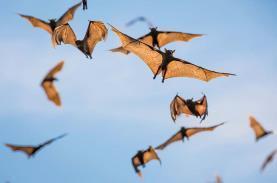Abstract
Two recent studies provide initial insights into a novel coronavirus that is associated with an outbreak of human respiratory disease.
Subject terms: Pathogens, Virology
Coronaviruses have caused notable respiratory disease outbreaks in humans, including severe acute respiratory syndrome (SARS). Recently, the WHO declared an outbreak of acute respiratory distress syndrome and pneumonia a public health emergency of international concern, the highest level of alarm. The outbreak was first reported in Wuhan, China in December 2019, and since then, tens of thousands of cases have been reported and the outbreak has spread globally. Writing in Nature, two studies provide initial insights into the cause of the respiratory disease: a novel coronavirus of probable bat origin.
Wu et al. studied a hospitalized patient who is a worker at a seafood market in Wuhan, a potential source of the outbreak. The patient experienced a severe respiratory syndrome and had abnormal chest radiographs. After excluding common respiratory pathogens as the cause, the authors performed meta-transcriptomic sequencing of bronchoalveolar lavage fluid (BALF) to identify the aetiological agent. Analyses of the sequencing reads led to the identification of a novel coronavirus (2019-nCoV). The whole genome (~29.9 kb) was assembled and characterized, and phylogenetic analyses revealed that 2019-nCoV is closely related (89.1% nucleotide similarity) to a group of SARS-like coronaviruses (subgenus Sarbecovirus of the genus Betacoronavirus). In phylogenetic trees based on the nucleotide sequences of whole genomes and viral protein genes, the 2019-nCoV clustered with Sarbecovirus in all phylogenies, including the 2002–2003 pandemic SARS-CoV. The authors found putative evidence of recombination events among sarbecoviruses, but found no evidence that recombination facilitated the emergence of 2019-nCoV.

Nature Picture Library/Alamy Stock Photo
To understand the potential to infect humans, the authors compared the receptor-binding domain of the 2019-nCoV spike protein with those of SARS-CoV and SARS-like CoVs. Significant similarities in amino acid sequence and predicted 3D structure between 2019-nCoV and SARS-CoV were observed, which suggests that 2019-nCoV uses the same entry receptor as SARS-CoV: the ACE2 protein.
In a separate study, Zhou et al. collected samples (including oral swabs and BALF samples) from seven patients who were hospitalized during the outbreak due to severe pneumonia, six of whom are workers at a seafood market in Wuhan. The authors first used a panel of pan-CoV primers to determine whether a CoV was the aetiological agent and found that five of the samples were PCR positive. Metagenomics analysis of a BALF sample identified a 2019-nCoV genome (~29.9 kb) that shares 79.5% sequence identity with a SARS-CoV.
Next, the authors characterized the 2019-nCoV genome and analysed the phylogenetic relationships between 2019-nCoV, SARS-CoV, bat SARS-related CoVs and a recently sequenced bat CoV. Using whole genomes and viral gene sequences, the authors observed a close phylogenetic relationship between 2019-nCoV and a bat CoV (96% identical at the whole genome level), suggesting a bat origin of 2019-nCoV. However, further studies are needed to determine whether the virus was transmitted to humans by an intermediate host.
The authors developed qPCR and serological assays, which enabled the diagnosis of 2019-nCoV in patients. Moreover, they successfully cultured the virus (named 2019-nCoV BetaCoV/Wuhan/WIV04/2019), which could be neutralized using sera from several patients.
Last, by performing infectivity assays using HeLa cells either expressing or not expressing ACE2 proteins from various mammals, the authors confirmed that the ACE2 protein is the viral entry receptor.
the authors observed a close phylogenetic relationship between 2019-nCoV and a bat CoV […], suggesting a bat origin of 2019-nCoV
In sum, these studies provide initial reports on 2019-nCoV, which could be vital in preventing its spread, and highlight bats as carriers of viruses with zoonotic and devastating potential.
References
Original articles
- Wu F, et al. A new coronavirus associated with human respiratory disease in China. Nature. 2020 doi: 10.1038/s41586-020-2008-3. [DOI] [PMC free article] [PubMed] [Google Scholar]
- Zhou P, et al. A pneumonia outbreak associated with a new coronavirus of probable bat origin. Nature. 2020 doi: 10.1038/s41586-020-2012-7. [DOI] [PMC free article] [PubMed] [Google Scholar]
Related article
- Cui J, Li F, Shi Z. Origin and evolution of pathogenic coronaviruses. Nat. Rev. Microbiol. 2019;17:181–192. doi: 10.1038/s41579-018-0118-9. [DOI] [PMC free article] [PubMed] [Google Scholar]


